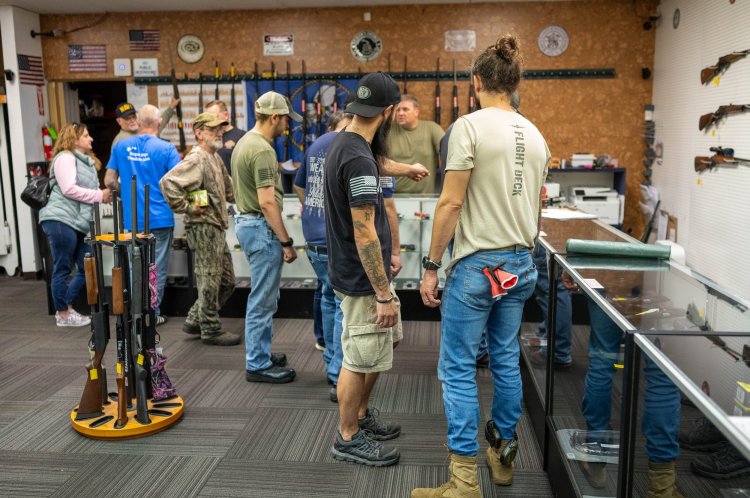In the aftermath of the devastating mass shooting in Lewiston, Maine, where 18 people lost their lives, there are still many unanswered questions regarding the firearm used, the type of bullets fired, and how the suspect, Robert Card, acquired the weapon.
As of Friday night, authorities confirmed that Card had been found dead in Lisbon following a two-day manhunt. However, they remained tight-lipped about the specifics of the gun used in the attack, and whether any firearms were recovered. The Maine Department of Public Safety declined to provide details, citing an ongoing investigation.
Nonetheless, it has been reported that a gun was found in the white Subaru that Card abandoned near the Androscoggin River in Lisbon. Authorities are conducting tests to determine if this gun was used in the shooting and are tracing its origins to establish when and where it was obtained.
Michael Sauschuck, Maine’s commissioner of public safety, acknowledged the presence of evidence related to the gun but did not disclose its exact nature.
Gun shop owners have offered their insights into the type and capacity of the firearm used in the shooting. While surveillance photos suggested that the shooter was carrying an AR-style rifle, its specific model remained unclear. Some AR-style rifles are capable of firing larger-caliber and more destructive bullets than others.
It was confirmed that the weapons used by Card were not Army-issued, despite his status as a sergeant first class in the U.S. Army Reserves. The reserve unit Card belonged to conducted a thorough inventory of its service weapons and reported 100% accountability. Additionally, Card did not have access to unit weapons unless engaged in mandatory training or authorized duty.
As for the firearm’s caliber, experts have weighed in on the possibilities. It is believed that the shooter may have used an AR-15 or AR-10 rifle, both semi-automatic rifles. These rifles are popular among civilians for their appearance and firing mechanism, resembling military-style weapons. However, the shooter’s firearm was a full-size carbine rifle with a longer barrel, a basic magazine, and a standard stock. Larger caliber bullets may have been used for increased damage.
Investigations indicate that Card may have used a rifle firing .308-caliber bullets, while most AR-15 rifles use .223-caliber ammunition. The presence of modifications or accessories on the gun in question could not be definitively established from surveillance photos.
To establish a link between the firearm and the crime scene, forensic experts must test the weapon. This process typically involves test-firing the gun in a crime lab, followed by microscopic comparisons of the test-fired cartridges and bullets with those recovered from the crime scene. Additionally, the firearm’s serial number can be used to trace its history, including manufacturer, distributor, and dealer information.
Despite concerns about Card’s mental health and prior incidents, it appears he was not legally barred from possessing a gun, and Maine’s “yellow flag law” was not invoked against him. This law allows police to seize firearms from individuals considered a risk to themselves or others. Card had a documented history of mental health problems, including threatening to harm a National Guard base and receiving treatment at a mental health facility.
To acquire a semi-automatic rifle legally from a gun store, Card would have been required to complete necessary forms and undergo an FBI background check. The FBI processes millions of these background checks since the National Instant Criminal Background Check System (NICS) was established in 1998. There is an obligation to report multiple handgun purchases to the Bureau of Alcohol, Tobacco, Firearms and Explosives (ATF), but there is no information available regarding Card’s previous purchases.
The tragedy in Lewiston underscores the need for thorough investigations into firearm acquisitions, especially in cases involving individuals with a history of mental health issues.




















